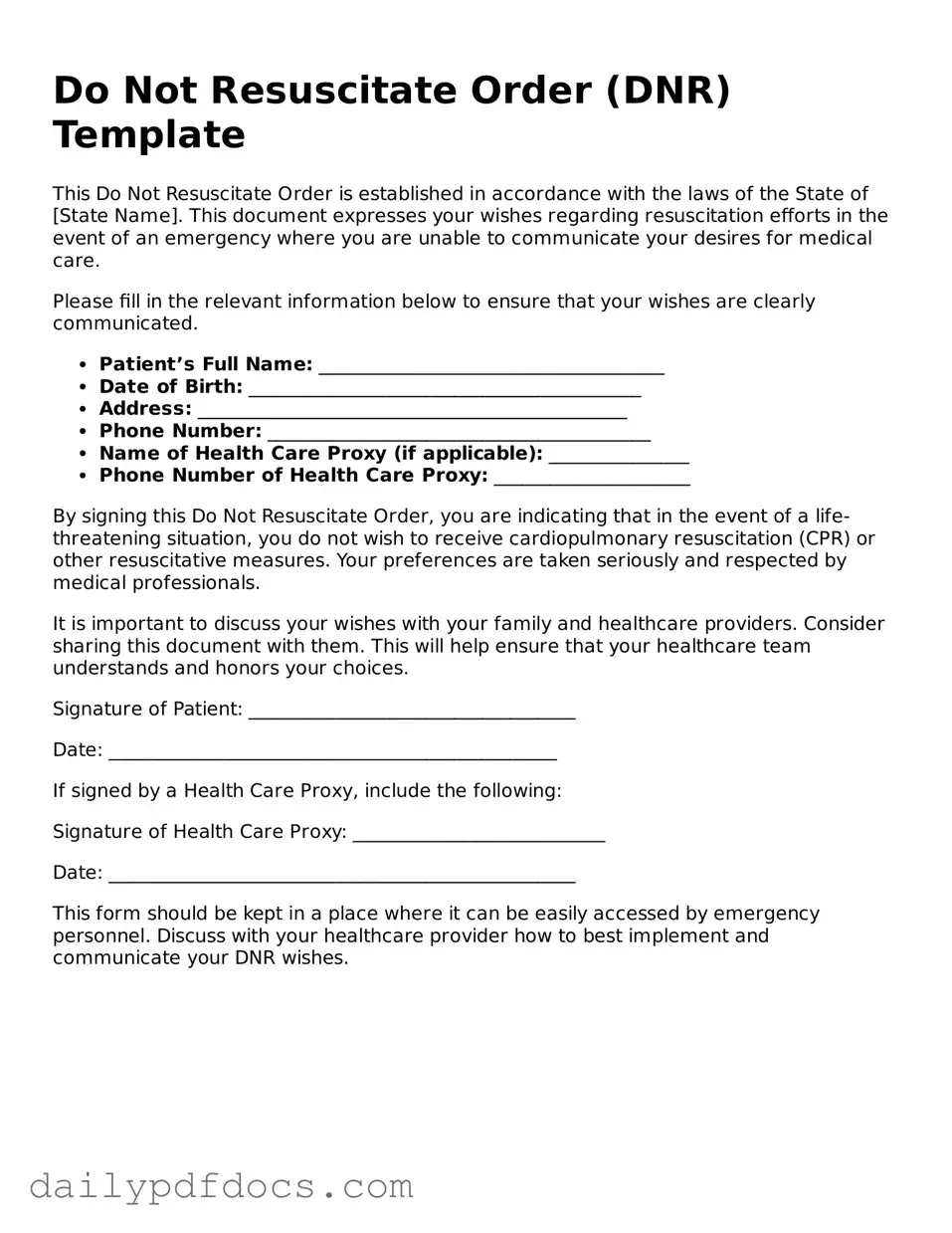Do Not Resuscitate Order (DNR) Template
This Do Not Resuscitate Order is established in accordance with the laws of the State of [State Name]. This document expresses your wishes regarding resuscitation efforts in the event of an emergency where you are unable to communicate your desires for medical care.
Please fill in the relevant information below to ensure that your wishes are clearly communicated.
- Patient’s Full Name: _____________________________________
- Date of Birth: __________________________________________
- Address: ______________________________________________
- Phone Number: _________________________________________
- Name of Health Care Proxy (if applicable): _______________
- Phone Number of Health Care Proxy: _____________________
By signing this Do Not Resuscitate Order, you are indicating that in the event of a life-threatening situation, you do not wish to receive cardiopulmonary resuscitation (CPR) or other resuscitative measures. Your preferences are taken seriously and respected by medical professionals.
It is important to discuss your wishes with your family and healthcare providers. Consider sharing this document with them. This will help ensure that your healthcare team understands and honors your choices.
Signature of Patient: ___________________________________
Date: ________________________________________________
If signed by a Health Care Proxy, include the following:
Signature of Health Care Proxy: ___________________________
Date: __________________________________________________
This form should be kept in a place where it can be easily accessed by emergency personnel. Discuss with your healthcare provider how to best implement and communicate your DNR wishes.
